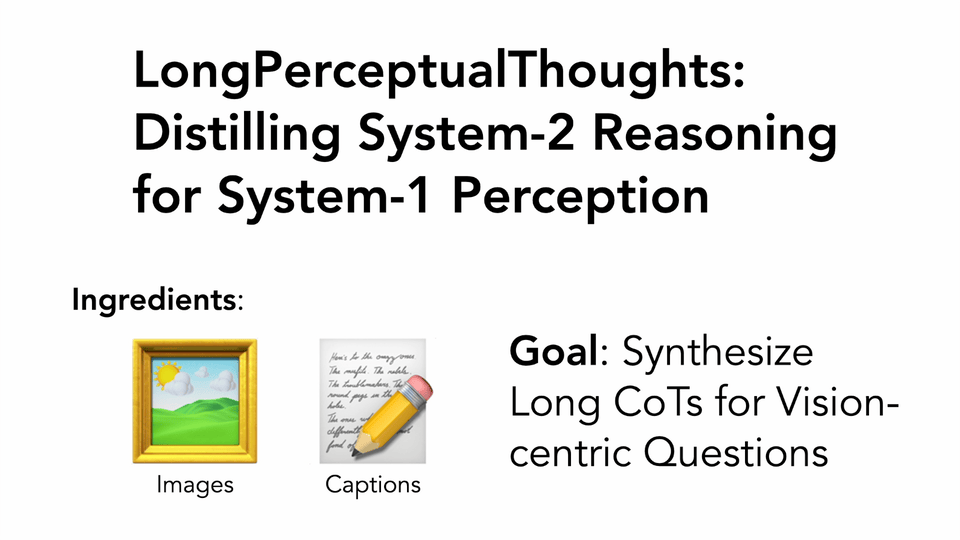Commuting? Listen to our paper's key insights in just minutes!
Data Synthesis Framework: Ask, Think, and Think Harder
We propose a scalable, three-stage framework to synthesize long CoTs from images and dense captions:

- Stage 1 – Ask using an LLM: We start by converting dense image descriptions into multiple-choice questions using GPT-4o-mini. These questions are designed to be grounded, diverse, and verifiable, ensuring the model has a clear visual task to reason about.
- Stage 2 – Think like a VLM: Next, we use a Qwen2.5-VL-7B-Instruct to generate a simple chain-of-thought (CoT). These are short, direct reasoning steps that are within the VLM’s comfort zone, providing a natural foundation to build deeper thoughts from.
- Stage 3 – Think harder like a Reasoning VLM: Finally, we hand over the image, question, and simple CoT to a powerful reasoning LLM (e.g., DeepSeek-R1-Distill). With a gentle nudge, like inserting "Wait," before the reasoning begins, we prompt the model to reflect, verify, and revise its thinking. The result? A rich, multi-step long CoT that mimics system-2 behavior: setting subgoals, checking assumptions, and even backtracking if needed.

